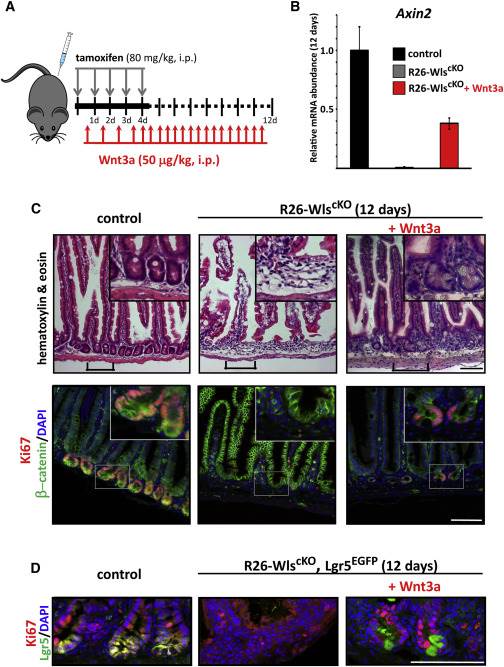Wnt Ligands (Wnts)
Related Symbol Search List
Immunology Background
About Wnt Ligands (Wnts)
Wnt ligands are a large family of cysteine-rich and highly hydrophobic secreted glycoproteins that can be divided into several subgroups, including classical Wnt (Wnt1, Wnt3a, Wnt8) and non-classical Wnt (Wnt5a, Wnt11). Wnt ligands are synthesized as inactive precursors and undergo a variety of post-translational modifications before secretion. Once released, Wnt binds to specific receptors on the cell surface, initiating signaling cascades that regulate gene expression and cellular responses.
In vertebrates, there are 19 different Wnt proteins whose expression is spatially and temporally regulated during development. Wnts activate intracellular signaling pathways by binding to one of several Frizzled family receptors and in some cases, a co-receptor, such as Lipoprotein Receptor-related Protein (LRP)-5, LRP-6, Related to tyrosine kinase (Ryk), or Receptor tyrosine kinase-like Orphan Receptor (ROR). In general, there are three primary Wnt signaling pathways. The first is commonly called the canonical beta-catenin-dependent pathway and ultimately culminates in beta-Catenin accumulation and TCF/LEF-1-mediated gene transcription. The other two less well-defined pathways include the Wnt/Ca2+ pathway and the planar cell polarity (PCP) pathway. Collectively, these pathways regulate cell survival, cell proliferation, cell fate determination, cell polarity, tissue patterning, and tissue homeostasis.
Functions of Wnt Ligands (Wnts)
- Development and Patterning
Wnt signaling is crucial for embryonic development and tissue patterning. During embryogenesis, Wnts help establish the body axis, control cell fate decisions, and regulate tissue morphogenesis. They play key roles in processes such as neural tube development, limb formation, and organogenesis.
- Cell Fate Specification
Wnt signaling is involved in determining cell fate during development and tissue regeneration. Wnts can influence the differentiation of stem cells and progenitor cells into specific cell types. They are important in the development of various tissues, including the brain, heart, skin, and gut.
- Stem Cell Maintenance
Wnt signaling is critical for the maintenance of stem cell populations in adult tissues. Wnts regulate the self-renewal and proliferation of stem cells, ensuring a constant supply of cells for tissue maintenance and repair. Dysregulation of Wnt signaling can lead to stem cell depletion or abnormal expansion, contributing to disease development.
- Tissue Homeostasis and Regeneration
Wnt signaling is involved in maintaining tissue homeostasis and promoting tissue regeneration. Wnts contribute to the renewal and repair of various tissues, including the intestine, skin, and bone. They regulate cell proliferation, cell migration, and tissue remodeling processes, ensuring tissue integrity and function.
- Cell Migration and Tissue Morphogenesis
Wnt signaling plays a role in cell migration and tissue morphogenesis during development and wound healing. Wnts can guide cell movements, regulate cell polarity, and influence tissue organization and shape.
- Cancer Development
Dysregulated Wnt signaling has been implicated in various types of cancer. Wnt ligands can activate oncogenic signaling pathways, promoting cell proliferation, survival, and invasiveness. Mutations in components of the Wnt signaling pathway are frequently found in colorectal cancer and other malignancies.
- Synaptic Plasticity and Neurodevelopment
Wnt signaling is involved in synaptic plasticity, the ability of neurons to modify the strength of their connections. Wnts regulate the formation, maturation, and elimination of synapses in the brain. They also play a role in neurodevelopmental processes, such as axon guidance and neuronal migration.
- Immune Regulation
Emerging evidence suggests that Wnt signaling is involved in immune regulation and inflammation. Wnts can modulate immune cell function and cytokine production, influencing immune responses and tissue inflammation.
In summary, Wnt ligands are versatile signaling molecules that regulate a wide range of cellular processes during development, tissue homeostasis, and disease. Their functions extend across multiple organ systems and impact processes such as cell fate determination, tissue regeneration, and cancer development. Understanding the intricate mechanisms of Wnt signaling is crucial for unraveling the complexities of development, disease, and potential therapeutic interventions.
 Fig.1 Extra-epithelial Wnt ligands are essential for the maintenance of intestinal homeostasis. (Valenta T, et al., 2016)
Fig.1 Extra-epithelial Wnt ligands are essential for the maintenance of intestinal homeostasis. (Valenta T, et al., 2016)

